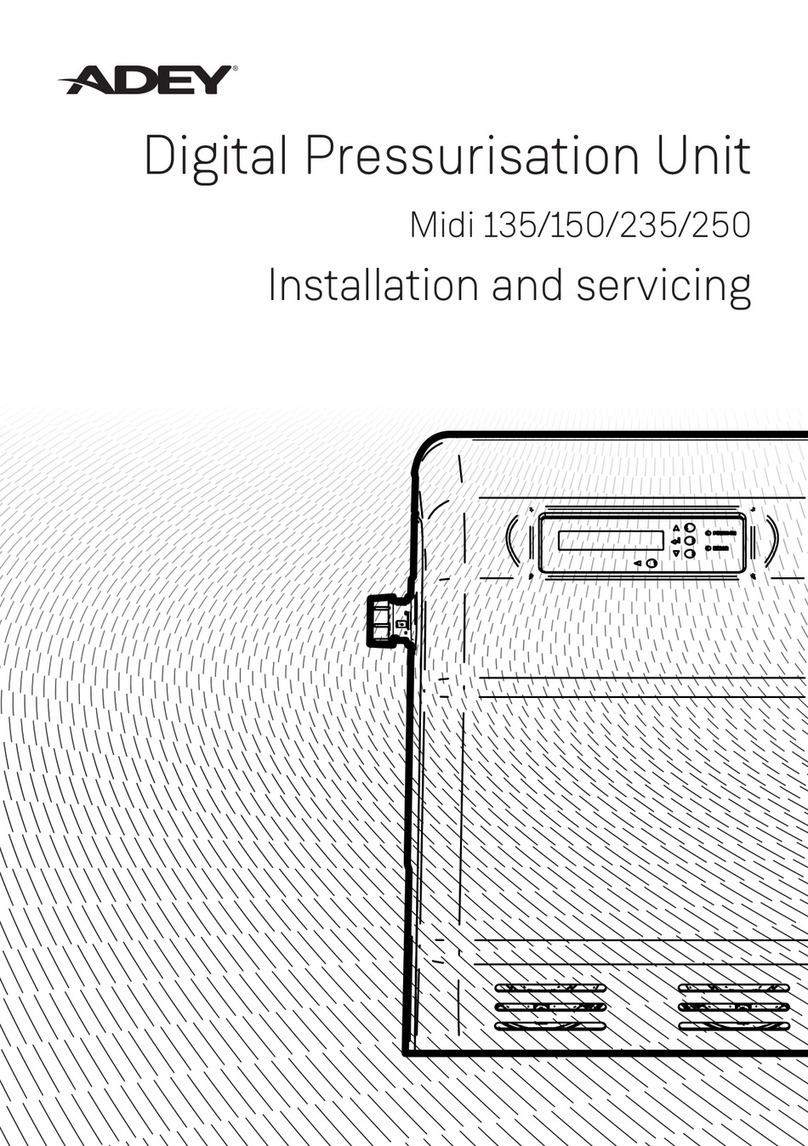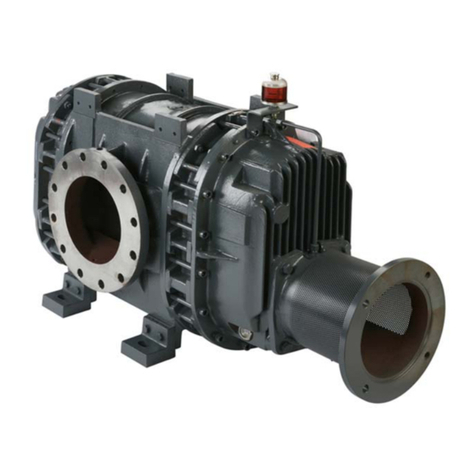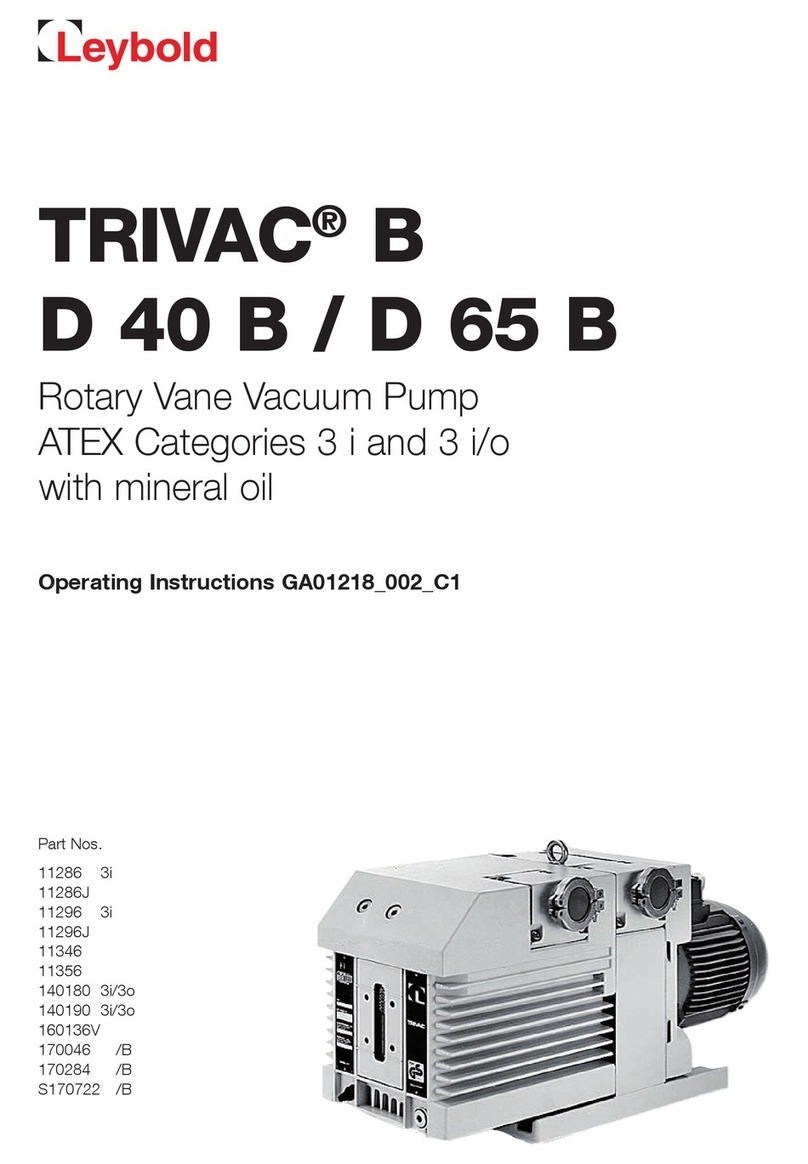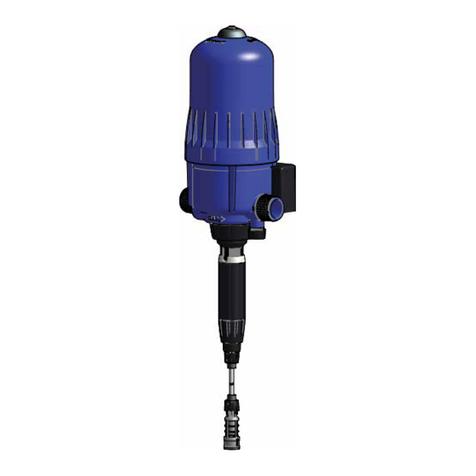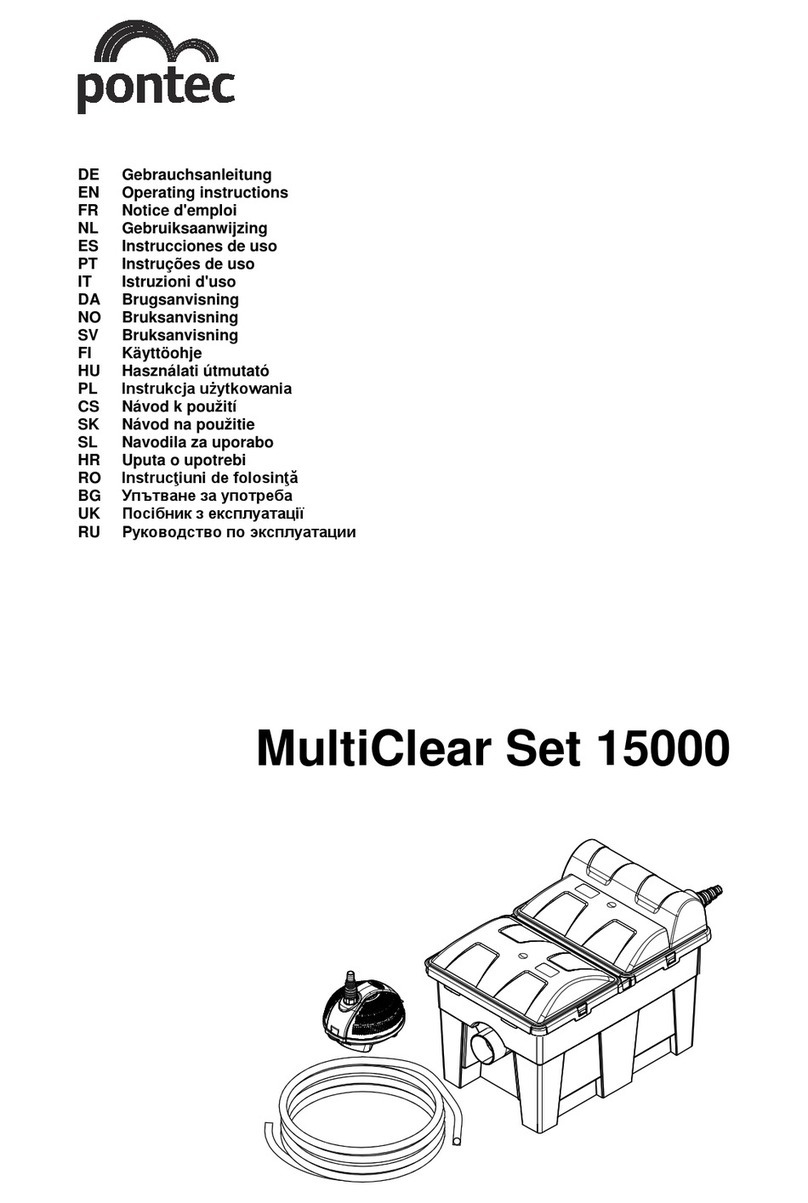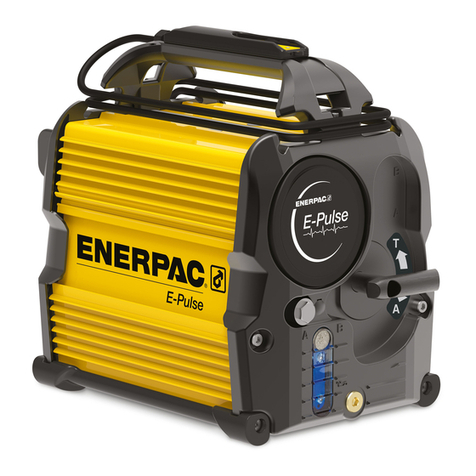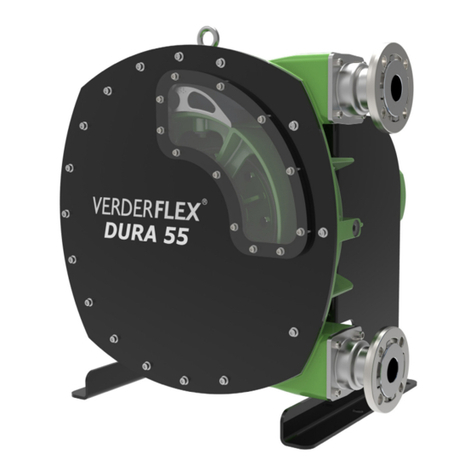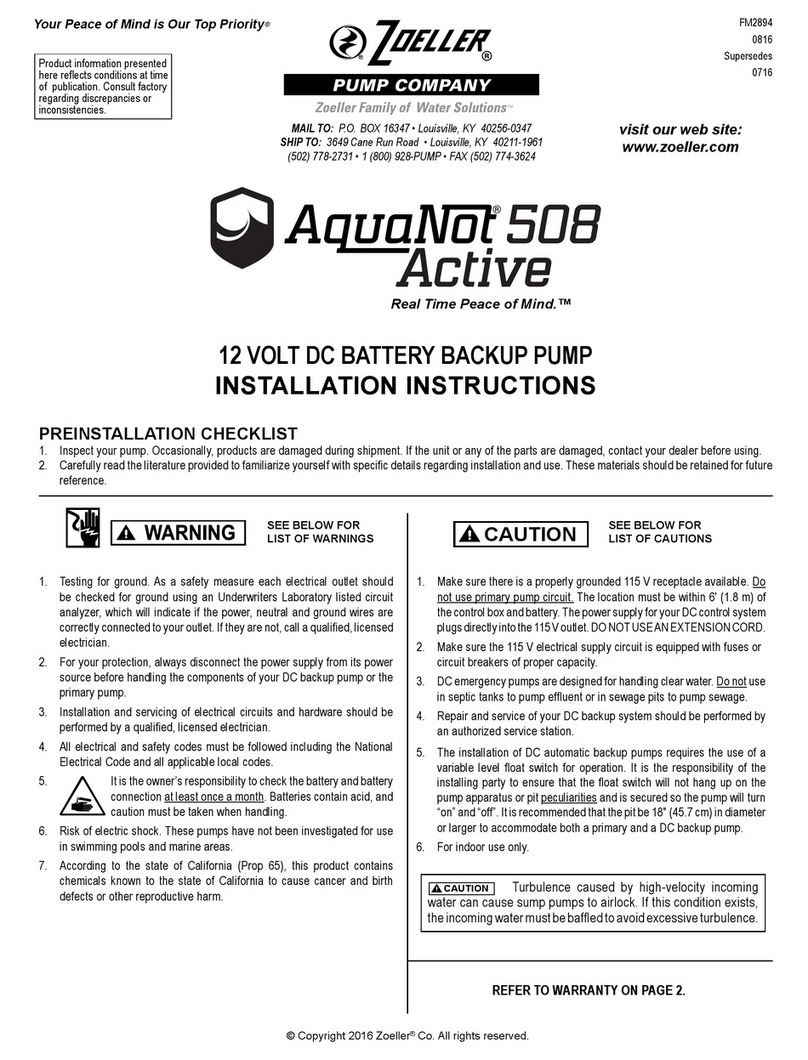Adey Mini 130 User manual

Installation and servicing
Mini 130/230
Digital Pressurisation Unit

- 2 - - 3 -
CONTENTS Page
Checklist .......................................................................... 4
Important Facts - read before commencing installation ............................... 5
Location ........................................................................... 6
Key Features ....................................................................... 8
Installation ........................................................................ 9
Electrical Installation ............................................................... 13
Commissioning .................................................................... 17
Operation .......................................................................... 21
Maintenance ....................................................................... 22
Environment Protection ............................................................ 23
Technical Specification ............................................................. 24
Trouble Shooting ................................................................... 25
Product Log ....................................................................... 26
Guarantee ......................................................................... 29
PRODUCT DESCRIPTION
Heating and cooling system pressurisation top up unit with integral water storage tank and
electric solenoid piston pump, automated control system consisting of pressure transducer
and water level switch. The tank includes an AB air gap for category 5 fluid isolation (BS EN
1717).
APPLICATION
The ADEY® Pressurisation Unit, (APU) Mini range is designed to provide intermittent water
top up only to compensate for intermittent losses in system pressure in heating and cooling
systems in commercial or industrial applications. These could include slight leaks, air venting,
etc. The units are not designed to deal with sudden losses of system pressure due to
major water losses over extended periods. They are also not to be used for water boosting
applications.
STORAGE
If this product is not to be installed immediately on receipt, ensure that it is stored in a dry,
frost and vibration free location in its original packaging.
WARNINGS:
zThe electrical installation must be carried out in accordance with the current
national electrical regulations.
zThe electrical installation must be installed by a qualified person.
zThe motor is not accessible in normal operating mode. The unit must only be
operated with the front cover in place.
zIn the interests of electrical safety a 30 mA residual current device (R.C.D.
not supplied) should be installed in the supply circuit. This may be part of a
consumer unit or a separate unit.
zThis appliance must be earthed via the supply cord.
zThis appliance must not be used for any other application without the written
consent of ADEY Commercial Limited.
zThis appliance can be used by children aged from 8 years and above and
persons with reduced physical, sensory or mental capabilities or lack of
experience and knowledge if they have been given supervision or instruction
concerning use of the appliance in a safe way and understand the hazards
involved. Children shall not play with the appliance. Cleaning and user
maintenance shall not be made by children without supervision.
zChildren should be supervised to ensure that they do not play with
the appliance.
zThis product should not be used for the supply of water to more than one
heating/cooling system at a time.
Please read installation details carefully as they are intended to ensure this product
provides long, trouble free service. Failure to install the unit in accordance with the
installation instructions will lead to invalidation of the warranty.
Read this manual carefully before commencing installation.
This manual covers the following products:
Mini 130
CP1-03-04911
Mini 230
CP1-03-04912
As a WEEE producer, ADEY Commercial Limited are obligated to finance the collection,
treatment & recovery of WEEE, and our compliance under these regulations is ensured
via our work with our WEEE Compliance Scheme of choice, B2B Compliance.
THIS PRODUCT COMPLIES WITH CURRENT EU PRODUCT LEGISLATION

- 4 - - 5 -
Item Description Qty Item Description Qty
APU 1 Fill valve flow restrictor, blue 1
Front cover 1 Rubber hose sealing washer, to
be used with item C 1
Flexible hose, G ½ 15 mm
compression 1 Cable tie 2
M6 screw 1 Instruction book 1
Wall mounting plate 1
A
E
C
B
D
H
G
F
I
1 IMPORTANT FACTS: READ BEFORE COMMENCING PUMP INSTALLATION
A Water storage capacity.
1.11 The APU Mini has a usable water volume of approximately 2 litres; the length
of time the APU takes to pressurise a system will be dependent on the pressure
differential between the cold fill and set pressures and also the refill rate of the tank.
1.12 Ensure the pumps are primed as described in the priming section before
starting, to avoid causing damage to the pump. See Section 6.20 Hydraulic
commissioning.
B Water temperature
This unit is designed to pump cold water only which should not exceed the following
values:
1.13 The maximum allowable water temperature is 23 oC (see Technical Section).
1.14 The minimum allowable water temperature is 4 oC.
C Pipework - General
1.15 Do not drill holes or put fastenings into the APU Mini tank, this will cause
leakage.
1.16 Secure pipework: Ensure pipework to and from pump is independently
supported & clipped to prevent forces being transferred to inlet and outlet
branches of the unit. Do not secure pipework to the APU Mini, this will cause
damage and possible leakage.
1.17 Flux: Solder joints must be completed and flux residues removed prior to APU
Mini installation (flux damage will void any warranty).
1.18 Pipework design: Care should be taken in the design of pipework runs to
minimize the risk of air locks e.g. use drawn bends rather than 90obends.
1.19 DO NOT introduce solder flux to flexible hose, tank, pump or any
parts manufactured from plastic.
1.20 DO NOT allow contact with oil or cellulose based paints, paint thinners or
strippers, acid based descalents or aggressive cleaning agents.
1.21 DO NOT bend the flexible hose beyond 90o. It must be installed as
detailed, DO NOT kink. See Installation Section 4.14.
D Plumbing installation regulations
1.22 The plumbing installation must comply with the current water and building
regulations.
1.23 The plumbing installation must be installed by a qualified person.
E System filling
1.24 The APU Mini is NOT DESIGNED TO FILL THE SYSTEM FROM EMPTY.
It is only intended to top up the system after occassional water leakage.
Systems should be filled via a dedicated filling loop.
Fig. 1
IMPORTANT: With the appliance removed from its packaging check for any damage prior
to installation. If any damage is found contact ADEYCommercial Ltd within 24 hours of
receipt.
A D
C
Front cover removed for clarity
B
E
Electrical rating
plate & serial
number
G
H
F
CHECKLIST
Note: Your product may vary slightly from the picture above.

- 6 - - 7 -
2 LOCATION - GENERAL
2.11 Location: The APU Mini must be located on a solid wall of sufficient
strength to support the filled weight of the APU Mini, close to the
water source and a suitable overflow position (see Section 10 -
Technical Specification for filled weight). The APU Mini must not be
installed in a loft space. It must also be considered that the noise
and vibration from the APU Mini may be transmitted through the
structure it is sited on. Ensure the minimum clearance requirements
are followed to allow servicing of the unit.
2.12 Access and minimum clearance requirements: For emergencies
and maintenance the APU Mini must be easily accessible and have
the minimum clearance around it as laid out in Fig. 2. Additional
access to the front of the unit will be required to operate the keypad
and view the display.
2.13 Protection: The APU Mini must be located in a dry, frost free area.
2.14 Ventilation: Ensure an adequate air flow to cool the APU Mini.
Separate the APU Mini from other appliances that generate heat.
Do not block the vent holes on the front cover.
2.15 Water retention: Site the APU Mini in a location where in the
unlikely event of a water leak, any spillage is contained or routed
to avoid electrics or areas sensitive to water damage. As part of
the AB airgap (CAT 5 fluid isolation) the APU Mini has a weir type
overflow on the front, water will be discharged from this area in the
event of the failure of the inlet valve or non-return valve.
2.16 Supply inlet pressure: The water supply inlet pressure must not exceed 7 bar.
2.17 Ambient temperature: The APU Mini must be sited in a location where the
ambient temperature does not drop below 4 °C or exceed 40 °C.
2.18 Pipework: For optimum performance inlet and outlet pipework must be a
minimum of 15 mm pipe.
2.19 Static outlet pressure: The static outlet head must be 3 metres below pump
maximum cold fill pressure (vertically above the appliance).
2.20 Noise: A flexible hose is supplied as standard which will minimise the
transmission of noise and vibration from the APU Mini pump to the
pipework connected to the appliance outlet. However, care must be taken
when mounting the APU Mini that any noise is not amplified through loose
panels or pipework.
2.21 Flexible hose: Only use the ADEY hose supplied with the APU Mini.
2.22 Isolating valves: Separate system isolating valves (non-restrictive) must be
fitted to allow easy service of the APU Mini. Isolating valves must be mounted
where specified to allow the system isolation and removal of the APU Mini if
needed. See Section 4.14 for installation details.
300
500
300
150 150
Fig. 2

- 8 - - 9 -
3 KEY FEATURES
3.11 The APU Mini comprises of the following main components:-
1. Moulded tank – Main body of the APU, comprising of an integrated water
tank with warning pipe and weir overflow and mounting the solenoid
piston pumps, manifold and controller.
2. Pump assembly – One or two piston pump units mounted into the
moulded tank with vibration isolating rubber mounts.
3. Outlet manifold – Brass manifold with pressure transducer used to monitor
system pressure and connection to the pump(s)
4. Programmable controller – Intuitive, user set controller, allowing system set up
and easy alarm connection.
5. Wall mounting plate – Robust stainless steel wall mounting plate allowing
quick, easy installation and removal if needed.
6. Moulded cover – Moulded acrylic capped ABS cover retained to the
moulded tanks with Dual LockTM fastening system for quick and easy
access.
3.12 Principle of operation: The pressurisation unit consists of a break tank and
one or two piston pumps. The break tank is supplied with mains water from
the left to a float valve and includes an overflow and weir to maintain an AB air
gap in the tank. The unit is connected to the heating/chiller system
via a flexible hose which can exit the unit on either the left or right. The
pumps are connected via a flexible hose to the tank via a rubber connector.
A pressure transducer monitors system pressure and if a reduction in system
pressure is detected, the controller runs the pumps until the system is re-
pressurised to the required pre-set level. If the unit only has a single pump
connected it will run on a 30 minutes on/30 minutes off basis until this level
is reached, if the unit is a twin pump model the pumps run in duty standby
mode (the controller will alternate which pump starts first to even the
wear on the pumps). The manifold is fitted with a non-return valve to ensure
system pressure is maintained once pressurised.
4 INSTALLATION
4.11 Fill valve flow restrictor guidelines: Ensure side entry fill valve is fitted
with the correct filter and flow restrictor combination (dependant on the
mains water pressure) into the G ½ threaded tail as outlined below:
Coloured insert - To be used for water pressure between 1 and 4 bar
White insert - The APU Mini is pre fitted with the white high pressure insert.
Change if the unit is slow to fill or the water pressure is low (below 4 bar).
4.12 Cold mains feed connection: The connection to the cold water mains inlet is
made using a suitable fitting to the G ½ male thread on the left hand side of
the APU Mini. When tightening ensure the fill valve within the tank is not
rotated. If the valve is rotated it may not function correctly with the risk
of flooding. (Do not overtighten).
4.13 Wall plate fixing:
1. When installing the APU Mini on a wall ensure suitable fixings for the wall
structure are used and are suitable to support the unit when fully filled with
water (see technical section for filled weights). The holes in the wall plate are
6 mm in diameter, the maximum permissible screw head height is 3 mm.
2. All holes in the wall mounting plate must have fixings used in them as per
the image below, do not leave out fastenings as this will compromise the
integrity of the wall plate.
3. Ensure you have sufficent room around the area you are mounting the APU
Mini to allow installation, servicing and operation. See section 2.12.
4. Ensure wall plate is fixed to a flat vertical wall and the top of the plate is
horizontal.
1Fig. 3
2
3
4
5
6Fig. 4
Fig. 5

- 10 - - 11 -
5. Retain the APU Mini to the wall mounting plate using the single M6
retaining screw at the top of the wall plate.
6. Fit the plastic cover by pressing as indicated below with the palm of the
hand until the Dual LockTM is heard to ‘click’.
4.14 Pipework connections & guidelines:
1. Before connecting the APU Mini to the system ensure that system flushing
has been performed correctly and all foreign matter, including pipe scale,
has been removed.
Note: Foreign material from the system coming into contact with the
expansion vessel bladder could cause premature failure of the expansion
vessel.
2. Isolating valves MUST be installed on the unit inlet and outlet, before
connection to the flexible hoses to allow the unit to be isolated if required.
The isolation valve on the outlet should be of a lockshield type. See
Fig. 10.
3. A drain valve must be fitted on the outlet of the APU Mini before the
isolation valve. See Fig. 10.
4. The connection to the heating/chilling system is also made with the
supplied flexible hose and a 15 mm compression fitting. The hose is
made water tight with a sealing washer on assembly, nip tight to 4 to
5 Nm for water tight seal. (Do not overtighten).
5. The connection to the heating/chilling system can be made to the left
or right hand side by routing the flexible hose supplied as detailed below.
Fig. 6
Fig. 7
Fig. 9Fig. 8
Cable tie

- 12 - - 13 -
6. The flexible hose and any wiring can be retained in the desired position
using cable ties and the two metal cable retention points on the top left
and right of the APU tank. See Figs. 8 & 9.
7. The warning pipe should be connected to a suitable drain via a tundish
enabling visual warning of an overflow condition. The overflow fitting is
designed to use 19 to 23 mm diameter plastic waste pipe or connect to
G ¾ threaded pipe. Ensure there is a demountable joint in the pipe to
allow the removal of the APU Mini if needed.
8. Non-return valves, pressure reducing valves and RPZ valves MUST NOT
be installed between the APU Mini and the heating/cooling system. These
devices will prevent the pressure sensor from reading the system pressure
and will lead to incorrect operation of the unit.
9. The APU Mini should be connected to the system return header along with
the expansion vessels as specified in BS 7074. See Fig. 10.
4.15 Typical installation diagram:
4.16 Vessel sizing & location:
1. System expansion vessel sizing should comply with the BS 7074 Expansion
Vessel sizing calculation.
2. The pressurisation unit and expansion vessels should be connected to the
system at the same point, to provide a neutral pressure reading.
3. A lockshield valve and drain valve should be installed at the inlet of each
expansion vessel to allow for servicing.
5 ELECTRICAL INSTALLATION / EARTHING
5.11 Regulations: The electrical installation must be carried out in
accordance with the current national electrical regulations and
installed by a qualified person.
5.12 Safety: In the interests of electrical safety a 30 mA residual current
device (R.C.D. not supplied) should be installed in the supply circuit.
This may be part of a consumer unit or a separate unit.
5.13 Before starting work on the electrical supply ensure power supply is
isolated.
5.14 DO NOT allow the supply cord to contact hot surfaces, including the
motor shell, pump body or pipework. The cord should be safely
routed and secured by cable clips.
5.15 Adjacent pipes: Adjacent suction and delivery pipes should be fitted with
earthing clamps in accordance with current regulations (Fig. 12).
5.16 Earthing: This appliance must be earthed via the supply cord.
5.17 Pipework: Copper or metallic pipework must have supplementary earth
bonding where the continuity has been broken by flexible hoses or plastic
components.
5.18 Additional earthing: Certain installations may require additional earthing
arrangements such as equipotential bonding. Reference should be made to
the relevant regulations concerning this subject to ensure compliance.
5.19 Connections: The APU Mini must be connected to a dedicated fused SPUR via
a lockable isolator to avoid authorized disconnection.
5.20 The electrical connection must be made adjacent to (not behind) the APU
Mini to allow disconnection of the electrical supply should the pump module need to
be removed for service or maintenance.
Fig. 10
Fig. 11
APU Mini
Warning pipe
Drain
valve
Isolation valvesExpansion
vessel
Return
header
Lockshield
valve
Drain valve
Earth continuity
connection
Fig. 12
Flexible
hose
Metallic
pipework
Metallic
pipework

- 14 - - 15 -
5.21 Wiring of connection unit:
WARNING: This appliance must be earthed.
The wires in the mains lead (supply cord) are coloured in accordance with the
following code:
Green and Yellow: Earth
Blue: Neutral
Brown: Live
As the colours of the wires in the mains lead of this appliance may not
correspond with the coloured markings identifying the terminals in your
connection unit proceed as follows:
zThe wire which is coloured green and yellow must be connected to the
terminal in the connection unit which is marked with the letter E or by the
earth symbol: or coloured green or green and yellow.
zThe wire which is coloured blue must be connected to the terminal which
is marked with the letter N or coloured black.
zThe wire which is coloured brown must be connected to the terminal
which is marked with the letter L or coloured red.
5.22 Boiler interlock safety function:
The APU Mini is fitted with a single volt free contact specifically assigned for
boiler/chiller shut down in the event that the APU Mini detects system
pressure above the Hi alarm pressure or below the Lo alarm pressure.
The boiler interlock contact will be open circuit below the Lo alarm pressure
and above the Hi alarm pressure.
When the system pressure is in its normal operating pressure range (above Lo
alarm pressure and below Hi alarm pressure settings) the contact is
closed circuit
Always refer to the boiler/chiller manufacturer’s instructions for correct
integration.
5.23 Boiler interlock connections:
The circuit connected to the relay is limited to 5 Amps, 230 V a.c.
maximum. The Installer MUST fit a 5 Amp fuse in the circuit to the alarm
relay to protect the APU Mini from damage.
For connection of output relays follow the steps and images below:
1) Remove the required green connector from the right hand side of the
control board.
2) Strip 6-8 mm insulation from the end of the connection wire
(Max 1.5 mm2CSA).
3) Insert wire into connector and screw down terminal screws to secure
(0.6 Nm max.).
NO
Boiler Interlock
Fig. 13
Fig. 14
Fig. 15
Fig. 16

- 16 - - 17 -
4) Re-insert connector into the correct location on the control board and route
the cable to the back of the APU Mini and secure with a cable tie to the
retainer.
5.25 Supply cord replacement:
The supply cord and internal wiring within the terminal box are routed
and secured to ensure compliance with the electrical standard EN 60335-
1. It is essential that prior to any disturbance of this internal wiring, all
cable routing and securing details are carefully noted to ensure re-
assembly to the same factory pattern is always maintained.
If the supply cord is to be changed or is damaged, it must be replaced
with a special cord assembly available from ADEY or one of their approved
repairers. On disassembly note the cord retention and routing system.
Re-assemble to the same pattern. For information on cable connection
consult the wiring diagram.
Model Fuse Size (AMPS)
All models 5
5.24 Fuses: The following fuse size should be used:
6 COMMISSIONING
6.11 Pre-commissioning checklist:
Before starting the commissioning process the following conditions must be
met. If these conditions are not adhered to, damage to the equipment,
system and property may result.
zEnsure the unit is sited in a frost free area, away from precipitation and
water sprays/jets.
zAll necessary pipe/electrical connections should have been made to a
satisfactory standard by a qualified person.
zThe temperature and pressure at the point of connection are within the
operating limits of the pressurisation unit.
zThe heating/cooling system is fitted with a safety valve and expansion
vessel sized appropriately.
6.12 In order for the pressurisation unit and heating/cooling system to function
correctly the following conditions must be met. If these conditions have not
been met, the commissioning process should not continue.
zEnsure the system connection has been made into the heating/chiller
system return header.
zEnsure Non-return valves, pressure reducing valves or RPZ valves are NOT
installed between the pressurisation unit and the heating/cooling system.
zThe expansion vessel is pre-charged to the correct pressure (equal to
initial system design pressure).
6.13 Prior to commissioning, fill the heating/cooling system via a filling loop. The
APU Mini is NOT designed to fill the system from empty, it is only intended to
top up the system after occasional water leakage.
zEnsure the heating/cooling system is filled and pressurised to the required
cold fill pressure, with the water at approximately ambient temperature.
zEnsure the system is dosed with a suitable corrosion inhibitor. Note the
APU Mini is not designed for dosing chemicals into the system, this must
be done via other means.
6.14 Expansion vessel setting:
zTo set or check the expansion vessel charge pressure the lock-shield
valve between the APU Mini and the vessel must be closed and the
vessel drained using the drain valve.
zA suitable gauge should be used to check the charge pressure.
zIf the charge pressure is too high it can be reduced by releasing air from
the vessel pre-charge valve or by using a pressure gauge with an integral
air release valve.
zIf the charge pressure is too low a small increase can be provided using a
car foot pump otherwise an oil free compressor or nitrogen bottle is
recommended.
zWhen the correct pressure is set the Schrader valve protective cap must
be replaced.
zCheck the integrity of the pipe-work. Ensure the lock-shield valve
between the system and the expansion vessel is open and the drain
valve is closed.
Fig. 17
Retainer
Cable tie

- 18 - - 19 -
6.15 Controller overview
The pressurisation unit controller is designed to be intuitive to use and allows
functions and alarms to be set by the installer/user.
The functions are set using the 3 buttons (A, B, & C) on the front of the
controller and with the help of on screen prompts via the back lit LCD display.
On the front of the APU a green ‘power on’ light will be displayed whilst the
unit is powered. If an alarm or error is raised the red ‘Error’ light will be
displayed.
A number of pressure set points can be set using the menus, these set points are
detailed below, 1 to 4 and in the description of the function.
Button A Enters menus or selects values.
Button B Scrolls down through menus or reduces set values.
Button C Scrolls up through menus or increases set values.
6.16 Function list & explanation
The functions are contained within an initial display and a settings menu.
6.17 Initial display
On start up, and during normal operation, if the APU has had no button inputs
for 1 minute, the system pressure will be displayed (see Section 7.11).
6.18 Setting of APU Mini see Fig. 19
To access the setting of the APU Mini see the following procedure:
1 Press and hold button A for 5 seconds.
2 P1 will be displayed and the red Error light will slowly flash. See Fig. 20.
3 Using buttons B & C select the P function required.
4 Press button A to enter the function.
5 Using buttons B & C increment the value required up and down.
6 Press button A to confirm setting.
7 Press and hold button A until the red Error light stops flashing and the APU
Mini reverts to normal operation. This operation will save the changed
values.
P1 System pressure (2)
see Fig. 18
Sets the required system pressure. Set in 0.1 bar
increments up to the maximum set value for the APU model.
APU 130 & 230, 3.0 bar max.
P2 Differential pressure (3)
see Fig. 18
Sets the pressure the APU will turn on at as the system
pressure falls. Relative to the set system pressure. Set in
0.05 bar increments below the System pressure (2), cannot
be set above 0.1 bar below the System pressure (2).
P3 Hi Alarm (1)
see Fig. 18
Sets high system pressure alarm. Set in 0.05 bar increments
above the System pressure (2). Cannot be set below System
pressure + 0.5 bar. Alarm auto resets when system pressure
is reduced below alarm level.
If no button inputs are received within 1 minute the APU Mini will revert to
normal operation and the red Error light will stop flashing.
Note – Pumps do not operate when in the setting menu.
The following functions can be set and modified:-
TIME
PRESSURE
HIGH ALARM SET VALUE (1)
LOW ALARM SET VALUE (4)
SYSTEM PRESSURE SET VALUE (2)
DIFFERENTIAL SET VALUE (3)
PUMP 'OFF'
PUMP 'ON'
NORMAL OPERATION
SYSTEM
PRESSURE
Fig. 18
Fig. 19
AB C
Fig. 20
AB C

- 20 - - 21 -
6.19 Pre-set values
The APU will be delivered with the following pre-set values:-
P4 Lo Alarm (4)
see Fig. 18
Sets low system pressure alarm. Set in 0.05 bar increments
below the System pressure (2) - Differential pressure
(3) - 0.05 bar. Alarm auto resets when system pressure is
increased above alarm level
P5 Pump number Sets number of pumps fitted to APU. 1 or 2 pumps. Factory
set to suit model.
P6 Pump test
Allows pump 1 or 2 to be forced to run for 15 seconds to
confirm operation.
Using buttons A or B to select pump 1 or 2, then press button
A or B again to run the pump.
P7 Info. Displays software revision. No inputs.
Set Pressure 2 bar
Differential 0.2 bar
Hi Alarm 2.5 bar
Lo Alarm 1.3 bar
6.20 Hydraulic commissioning:
zEnsure both inlet and outlet hydraulic connections are made and
watertight.
zTurn on water supply to APU – Check for leakage and operation of fill
valve.
zAllow the tank to fill and water level to stabilise. Adjust the float of the
fill valve to set the water level if needed.
zClose isolation valve on the outlet of the APU.
zTurn the electrical supply ON to the APU. The system pressure will be
displayed.
zThe APU will run briefly and then turn off after a pre-set run on time.
Due to the small size of the isolated system the APU will signal a Hi
pressure error and the red error light will illuminate on the front of the
APU, this is normal.
zOpen the isolation valve on the outlet of the APU and the APU will
run and start to top the system up.
6.21 For further technical support: Phone the ADEY Customer Service team
on +44 (0) 1242 546717. Our staff are trained to help and advise you over
the phone.
7 OPERATION
7.11 Normal operation:
The ‘Home’ screen will display the status of the system pressure.
A green ‘Power on’ light will be displayed on the front of the APU.
During normal operation the APU will monitor the system pressure and re-
pressurise the system if the system pressure drops below the system pressure
– differential pressure. See Fig. 18.
Example: System pressure 2 bar, differential pressure 0.5 bar, pump will start
to re-pressurise system at 1.5 bar system pressure and stop at a system
pressure of 2 bar.
During the normal operation of a pressurised system, the system pressure
will fluctuate due to temperature changes causing expansion and contraction.
When setting the differential pressure for the Hi \ Lo alarms, please ensure
that the normal system pressure fluctuations are below the Hi pressure alarm
setting and above the differential pressure. If this is not done the APU will try
to compensate for the pressure change causing an over pressure within the
system or alarms being triggered.
7.12 Error and alarm display:
The following errors are shown on the display:
Hi Pressure monitored by the APU Mini is above the Hi alarm set pressure.
Display will flash between Hi and system pressure and red error light
will illuminate. Pumps will not run in this condition.
Lo Pressure monitored by the APU Mini is below the Lo alarm set pressure.
Display will flash between Lo and system pressure and red error light will
illuminate. Pumps will run in this condition.
Er The input signal from the pressure sensor is outside its normal range.
Display will flash Er and red error light will illuminate.
Fig. 21

- 22 - - 23 -
8 MAINTENANCE
8.11 Routine maintenance & service checks:
Every 6 & 12 months (see service log sheets below) the APU should be
inspected for:-
zDamage to the electrical supply cable.
zDamage to the outlet flexible hoses.
zLeakage from the APU or the connecting pipework.
zTest unit operation
zFloat valve check
zWater condition check
zExpansion vessel pre-charge check
8.12 Wiring diagram
There are no user servicable wiring or components inside the controller
assembly. DO NOT remove the retaining screws or the membrane cover over
the display.
8.13 Spares
The APU Mini is designed and built to be a reliable and high quality product, in
the event of spares being required please contact the ADEY Customer Services Team
on +44 (0)1242 546717.
8.14 Long term isolation and restart procedure
If the system is to be shut down for an extended period of time due to
maintainance or system modifications being carried out to the system the
following steps must be taken.
1. Isolate mains inlet water from the APU Mini.
2. Isolate the APU Mini from the system and vent excess pressure to drain.
3. Run the APU to pump excess water from the tank to drain.
4. Isolate the electrical supply from the APU Mini.
5. Ensure the APU cannot freeze. Damage will occur to the pumps if this
is allowed to happen.
6. Cover with plastic sheet or cardboard if work is to be conducted close to
the APU.
8.15 Restart
To ensure the APU Mini is in good working order after a prolonged period of
maintainance the following steps should be taken.
1. Inspect the APU Mini for signs of damage.
2. Check APU Mini tank for debris, remove debris and clean tank if needed.
Debris may cause damage to the pumps if it is allowed to be drawn in.
3. Check pressure vessel pre charge pressures before the system pressure is
increased.
4. Open the mains water isolating valve allowing the APU Mini tank to fill, and
ensure the fill valve is operating correctly and maintaining the correct
water level.
5. Check for signs of leakage.
6. Open the drain valve on the outlet of the APU Mini.
7. Turn on the mains electrical power and ensure both (if fitted) pumps can
run (use test pump option P6 if needed) and are pumping water to drain.
8. Close the drain valve and allow the APU Mini to build pressure; the APU
should turn off as the isolation valve to the system is closed.
9. Open the APU outlet isolation valve and monitor the APU Mini to ensure
there are no leaks as the system pressure increases.
10. Check all the pre set values on the APU, to ensure they are still suitable for
the system (after maintainance/modification)
9 ENVIRONMENT PROTECTION
Your appliance contains valuable materials which can be recovered or recycled.
At the end of the product’s useful life, please leave it at an appropriate local civic waste
collection point.
BLACK
WHITE
RED
230 VAC/1PH/50Hz
SUPPLY
N
E
L
GREEN/YELLOW
BLUE
BROWN
BLUE
BROWN
BLUE
BROWN
PUMP 1
BOILER INTERLOCK N/C
L E N
L E N
2
1
PUMP 2
PRESSURE
TRANSDUCER
0 - 6 bar, 0,5 to 4,4 VDC
VOLT FREE ALARM CONTACTS - 5 AMP MAX.
LEVEL SWITCH
OPEN CIRCUIT AT LOW LEVEL
CLOSED CIRCUIT AT HIGH LEVEL
BLACK
RED
COMMON
SIGNAL
+5 VDC
Fig. 22

- 24 - - 25 -
10 TECHNICAL SPECIFICATION
ADEY reserve the right to amend the specification without notice.
10.11 Noise: The equivalent continuous A-weighted sound pressure level at a
distance of 1 metre from the pump does not exceed 70 dB(A).
11 TROUBLE SHOOTING GUIDE
Symptoms Error Code Probable Cause Recommended Action
Pump(s) not
starting
No power to APU Ensure the green light is on the front of the APU, check fuse.
Low water Low water in tank Depress float valve to varify water is filling tank, check water level and
supply.
System pressure =
set pressure
APU functioning correctly. Check the set system pressure.
Sensor error Pressure sensor fault Remove pressure from the APU outlet and verify the displayed pressure
is 0 bar. Er will be displayed if the sensor signal is outside parameters.
(Replace sensor – call ADEY).
Pump(s) will not
stop
System pressure set
too high
System set pressure is set higher than the pump performance capability,
reduce set pressure. Ensure you have purchased the correct APU for the
system pressure required.
Sensor error Pressure sensor fault Remove pressure from the APU outlet and verify the displayed pressure
is 0 bar. Er will be displayed if the sensor signal is outside parameters.
(Replace sensor – call ADEY).
Low pressure alarm
triggered
Low pressure
Leak in system. Check system for leaks. Check for leaking pressure relief valve.
Low pressure alarm
set too high.
Reduce Low press alarm pressure. Check system pressure range during
normal operation.
Sensor error Pressure sensor fault Remove pressure from the APU outlet and verify the displayed pressure
is 0 bar. Er will be displayed if the sensor signal is outside parameters.
(Replace sensor – call ADEY).
High pressure
alarm triggered
High pressure System pressure
too high
Check system operation. Increase High presure alarm set pressure.
Sensor error Pressure sensor fault Remove pressure from the APU outlet and verify the displayed pressure
is 0 bar. Error will be displayed if the sensor signal is outside parameters.
(Replace sensor – call ADEY).
Sensor failure error Sensor error Pressure sensor
outside specifcation
Remove pressure from the APU outlet and varify the displayed pressure
is 0 bar. Er will be displayed if the sensor signal is outside parameters.
(Replace sensor – call ADEY).
Water overflowing
warning pipe or
weir
Water level too high Check function of the fill valve, replace or adjust if needed.
Manifold NRV leaking Isolate APU from system and mains water and replace non-return valve
and manifold.
Mini 130
CP1-03-04911
Mini 230
CP1-03-04912
General Guarantee 2 year
Approvals CE
Features System capacity Up to 6,000 litres
Mounting Wall mount
Pump control system ✓ ✓
Intelligent control interface ✓ ✓
System fill mode - -
Dry run protection ✓ ✓
Noise 60 dB(A) 60 dB(A)
Materials Break tank Polyethylene
Front cover Acrylic capped ABS
Performance Maximum Fill Pressure 3.0 bar (300 kPa)
Maximum flow 1 l/min
Maximum inlet pressure (tank fill valve) 7 bar (700 kPa)
Maximum working pressure 6 bar
Ambient air temperature Min 4 oC / Max 40 oC
Relative humidity 95 % non-condensing
Min./Max. water temperature Min 4 oC / Max 23 oC
Water tank Usable capacity 2 litres
Inlet valve and fill rate Torbeck (side entry) 12 l/min
Fluid category CAT 5 (type AB air gap with weir)
Connections Cold water inlet (flexible hose) G ½ male
Cold water outlet (flexible hose) 15 mm compression x 600 flexible hose
Overflow (compression fitting) G ¾ (19 - 23 mm diameter pipe)
Pump Number of pumps / pump mode 1 / Duty 2 / Duty-standby
Pump type / motor type Solenoid / piston
Duty rating (unit) Int 30 mins on/30 mins off (S3) Continuous (S1)
Pump head and seal PA66/POM NBR
Electrical Power supply / phase / frequency 230/1/50
Power consumption 100 Watts
Current (full load) 0.5 Amps
Fuse rating 5 Amps
Power cable (pre-wired) 1.5 metres
Alarm output Single
Physical IP rating IPX4
Width 293 mm
Depth 145 mm
Height 403 mm
Weight (including fittings) 3.6 Kg 4.2 Kg
Weight (filled) 6.6 Kg 7.2 Kg

- 26 - - 27 -
12 PRODUCT LOG
12.11 Customer details
Customer/company name
Site address
Date
12.12 Equipment details
System volume m3
Expansion vessel(s) fitted & pre-
charge pressure
Boiler(s) fitted
12.13 Commissioning record
Date commissioned
Company
Engineer
System set pressure
Differential pressure
Hi alarm set pressure
Lo alarm set pressure
12.14 Service Log
Service No. 1
Date
Engineer name
Company name
Tel. No
System pressure bar
Differential pressure bar
Check 6 months 12 months
Condition of wiring ü ü
Condition of hoses ü ü
Evidence of leakage ü ü
Test pump operation ü ü
Float valve operation x ü
Level probe operation x ü
Water condition x ü
Exp. vessel pre-charge x ü
Comments
Service No. 2
Date
Engineer name
Company name
Tel. No
System pressure bar
Differential pressure bar
Check 6 months 12 months
Condition of wiring ü ü
Condition of hoses ü ü
Evidence of leakage ü ü
Test pump operation ü ü
Float valve operation x ü
Level probe operation x ü
Water condition x ü
Exp. vessel pre-charge x ü
Comments
Service No. 3
Date
Engineer name
Company name
Tel. No
System pressure bar
Differential pressure bar
Check 6 months 12 months
Condition of wiring ü ü
Condition of hoses ü ü
Evidence of leakage ü ü
Test pump operation ü ü
Float valve operation x ü
Level probe operation x ü
Water condition x ü
Exp. vessel pre-charge x ü
Comments

- 28 - - 29 -
Service No. 4
Date
Engineer name
Company name
Tel. No
System pressure bar
Differential pressure bar
Check 6 months 12 months
Condition of wiring ü ü
Condition of hoses ü ü
Evidence of leakage ü ü
Test pump operation ü ü
Float valve operation x ü
Level probe operation x ü
Water condition x ü
Exp. vessel pre-charge x ü
Comments
Service No. 5
Date
Engineer name
Company name
Tel. No
System pressure bar
Differential pressure bar
Check 6 months 12 months
Condition of wiring ü ü
Condition of hoses ü ü
Evidence of leakage ü ü
Test pump operation ü ü
Float valve operation x ü
Level probe operation x ü
Water condition x ü
Exp. vessel pre-charge x ü
Comments
EC DECLARATION OF CONFORMITY
Product:
Name: ADEY Digital Pressurisation Unit – Mini
Model: Mini 130 - CP1-03-04911, Mini 230 - CP1-03-04912
Manufacturer:
Name: ADEY Commercial Limited
Address: UK Head Office, Gloucester Road, Cheltenham, GL51 8NR, United Kingdom
Object of the declaration:
Pressurisation Unit
The object of the declaration described above is in conformity
with the relevant Union harmonisation legislation:
Machinery Directive 2006/42/EU
Electromagnetic Compatibility Directive 2014/30/EU (EMC)
Low Voltage Directive 2014/35/EU (LVD)
REACH 1907/2006
ROHS 2011/65/EU
and carries the CE mark accordingly.
The product also complies with the requirements of the WEEE Directive
2012/19/EU and carries the WEEE symbol accordingly.
Conformity to the essential requirements of the legislation(s)
have been demonstrated by using the following standards:
EMC:
EN 61000-6-1
EN 61000-6-3
EN 61000-3-2
EN 61000-3-2
Safety:
EN ISO 12100
EN 809
EN 60335-1
EN 60335-2-41
EN 62233
Technical documentation is kept at the following address: ADEY Commercial Limited,
UK Head Office, Gloucester Road, Cheltenham, GL51 8NR, United Kingdom.
This declaration of conformity is issued under the sole responsibility of the manufacturer.
SIGNED FOR AND ON BEHALF OF ADEY Commercial Limited.
Signature:
Neil Watson
Date: 21/10/2019

- 30 - - 31 -

M0995 LF2-01-05000 V1
20939 V1
Telephone: +44 1242 546717 Email: info@adey.com
www.adey.com
Produced from recycled material
A carbon neutral company
All ADEY marks are trademarks of Adey Holdings (2008) Limited. Please visit adey.com/trademarks for a list of ADEY marks
Copyright Adey Holdings (2008) Limited © 2019. All rights reserved.
This manual suits for next models
1
Table of contents
Other Adey Water Pump manuals
Popular Water Pump manuals by other brands

Ribimex
Ribimex Ribiland 100QJD210-0.75 User and maintenance manual

LINC milton roy
LINC milton roy 84T-10 Series instruction manual
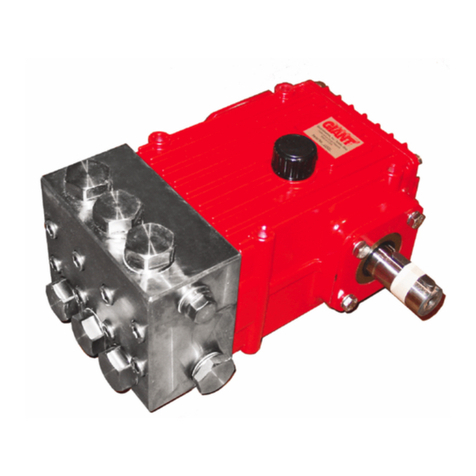
Giant
Giant P450-5100 Operating instructions/ repair and service manual

AquaMark
AquaMark AM-15V Installation, operation & maintenance manual
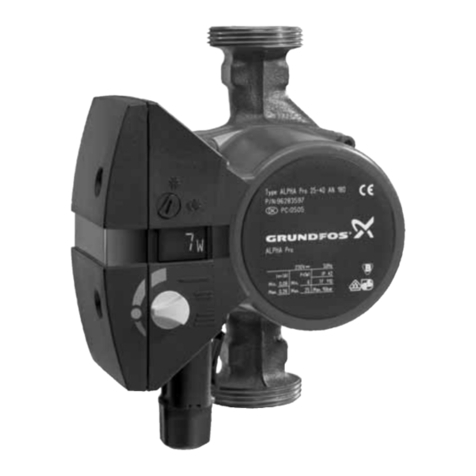
Grundfos
Grundfos ALPHA Pro Installation and operating instructions

Beckett
Beckett BK17 quick start guide
